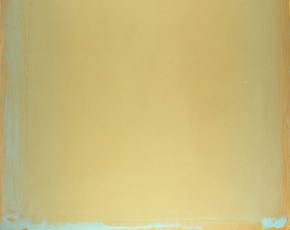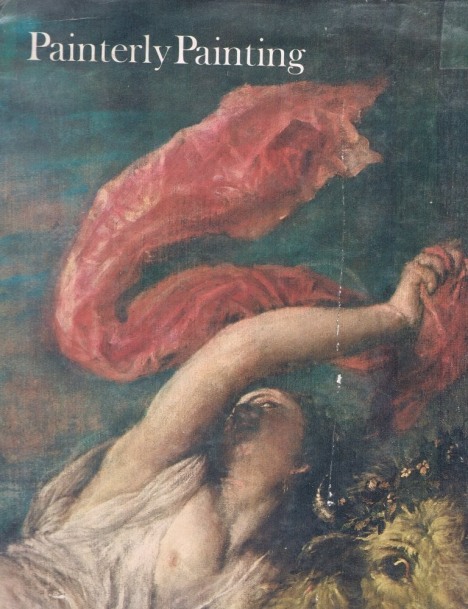
Scroll Down for More
From the late '30s until 1947, Jackson Pollock's paintings grew more "painterly"; that is, his brushwork became heavier, more energetic, messier. Buy painterliness has received a precise formal definition from Heinrich Wölfflin: it is a "surrender to mere visible appearance"; it merges objects, reducing "the appearance of the world [to] a shifting semblance." Painterliness takes on its full definition in opposition to linearity: the painterly is "the depreciation of line." The painterly and the linear define a range of formal possibilities whose limits they give with their symmetrical opposition.
The Painter who has left the architectural space has only a tangential, ambiguous relationship to other painters who have done the same. This point can be made specific with a look at David Diao's painting. For several years Diao painted monochrome or two-color works whose stained-in paint is inflected by elegant scrapings. This creates an interest in the play of reflective against non-reflective surfaces. But rather than "against" one should say "In the vicinity of": these paintings are without composition–they are edgeless; they provide no framework within which a clear opposition can define itself. But if the surface will not be resolved into the opposition reflective/non-reflective, then there can be no opposition surface/depth. The depths of these paintings remain inexhaustibly ambiguous, as can be seen by comparing them to the depths in "similar" paintings.
William Pette's early works are soft, inflected only by faint unanticipated glitterings. In their context, Diao's scraped inflections seem very strong; they draw the depths of the context of Ronnie Landfield's painting, Diao's depths reassert themselves; Landfield's high-keyed suppression, but not absence of, value contrast gives Diao's monochrome a slow, retreating motion. One is carried "toward" the monochrome itself–toward this aspect of Diao's painting. This motion is speeded up in the context provided by John Seery's intricate, fully occupied depths.
In the sublime, one's own development becomes a source of unresolvable ambiguity. Diao has recently exchanged his multitude of small, elegant inflections for one wide scrape over a canvas prepared with layers of color. These new works, especially the ones divided into two equal parts, show that Diao's sublime, like Barnett Newman's, is not an evasion of the edges of the canvas. Rather, it is a way of filling the canvas so that its literal shape is–to use Newman's word–"busted." This busting the shape of the canvas is a defeat for traditional structure. It is often quite violent with Newman, more a case of stretching or disjointing in Diao's recent work.
Far from clarifying his earlier works (as, for example, Synthetic Cubism helped to clarify Analytic Cubism), Diao's new paintings render them more ambiguous. His single gesture is both more and less unified–both more and less random–than his earlier multiple gestures. There is a superficial resemblance between the two ways of inflecting the surface–they are both scrapings–but they are not transformations of each other. There is intensity in the new inflection because it is not derived; it doesn't refer to a model of (dialectical) progress already established–it's not a continuation, it's a beginning. The individual's success against the contingency and incoherence of the sublime space is in a reflexiveness which turns the individual's share of that contingency back upon himself in the form of self-consciousness. For this to be a full share of contingency, each gesture must be a beginning.
Carter Ratcliff's 1971 essay "Painterly vs. Painted" for Art News Annual

Carter Ratcliff's 1971 essay featuring analysis of David Diao's Squeegee works.
